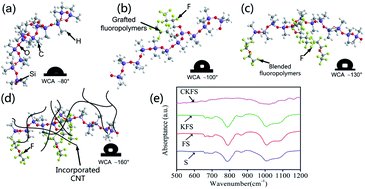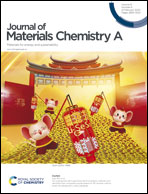A superhydrophobic fluorinated PDMS composite as a wearable strain sensor with excellent mechanical robustness and liquid impalement resistance†
Abstract
To endow strain sensors with superhydrophobicity may be a promising approach to improve the infrastructure safety in harsh environments. Artificial superhydrophobic strain sensors have exhibited good mechanical robustness and chemical resistance separately. However, a simultaneous demonstration of these characteristics along with superior liquid impalement resistance is still a big challenge. Here, we developed a strain sensor by combining fluorinated PDMS with multi-walled carbon nanotubes (MWCNTs). The key innovation in this research is achieving a multi-fluorination strategy on the PDMS matrix, which enhances the liquid impalement resistance without sacrificing mechanical robustness. Therefore, our strain sensors not only demonstrated superior sensitivity and excellent reproducibility, but also maintained superhydrophobicity after various kinds of destruction (such as toleration of strain up to 200%, man-made destruction using hands or sandpaper, chemical attack, 200 °C thermal attack and high-speed drop/turbulent jet impacts).

- This article is part of the themed collection: Journal of Materials Chemistry A Lunar New Year collection 2021


 Please wait while we load your content...
Please wait while we load your content...